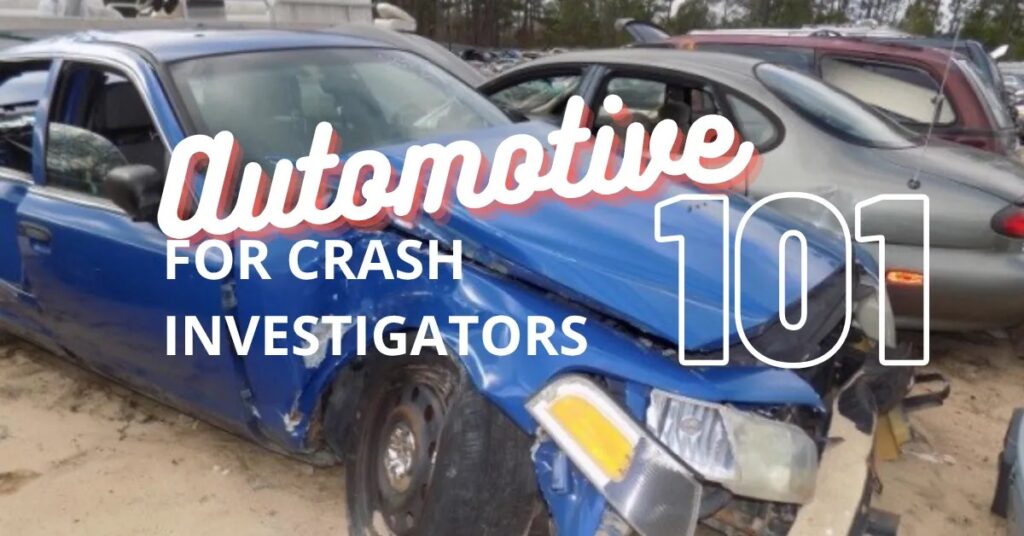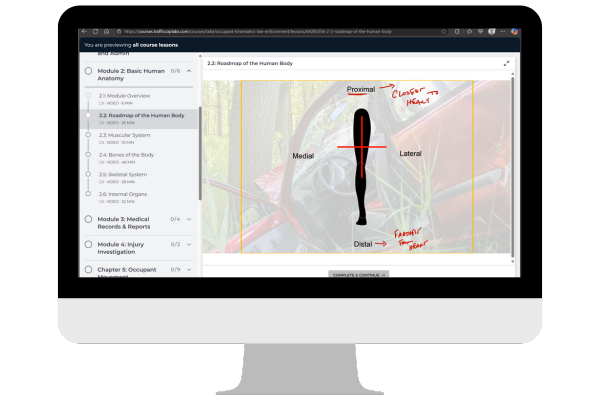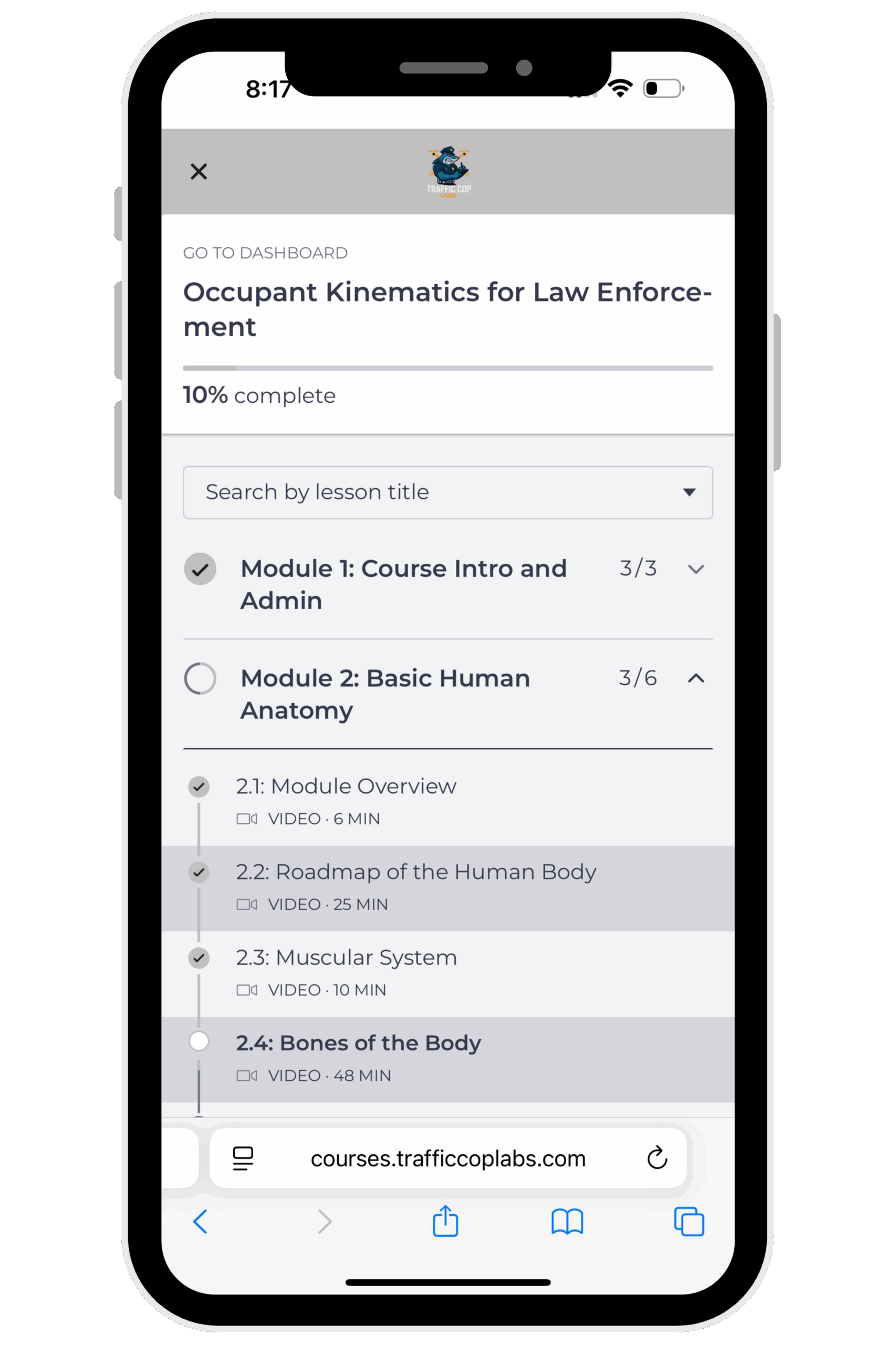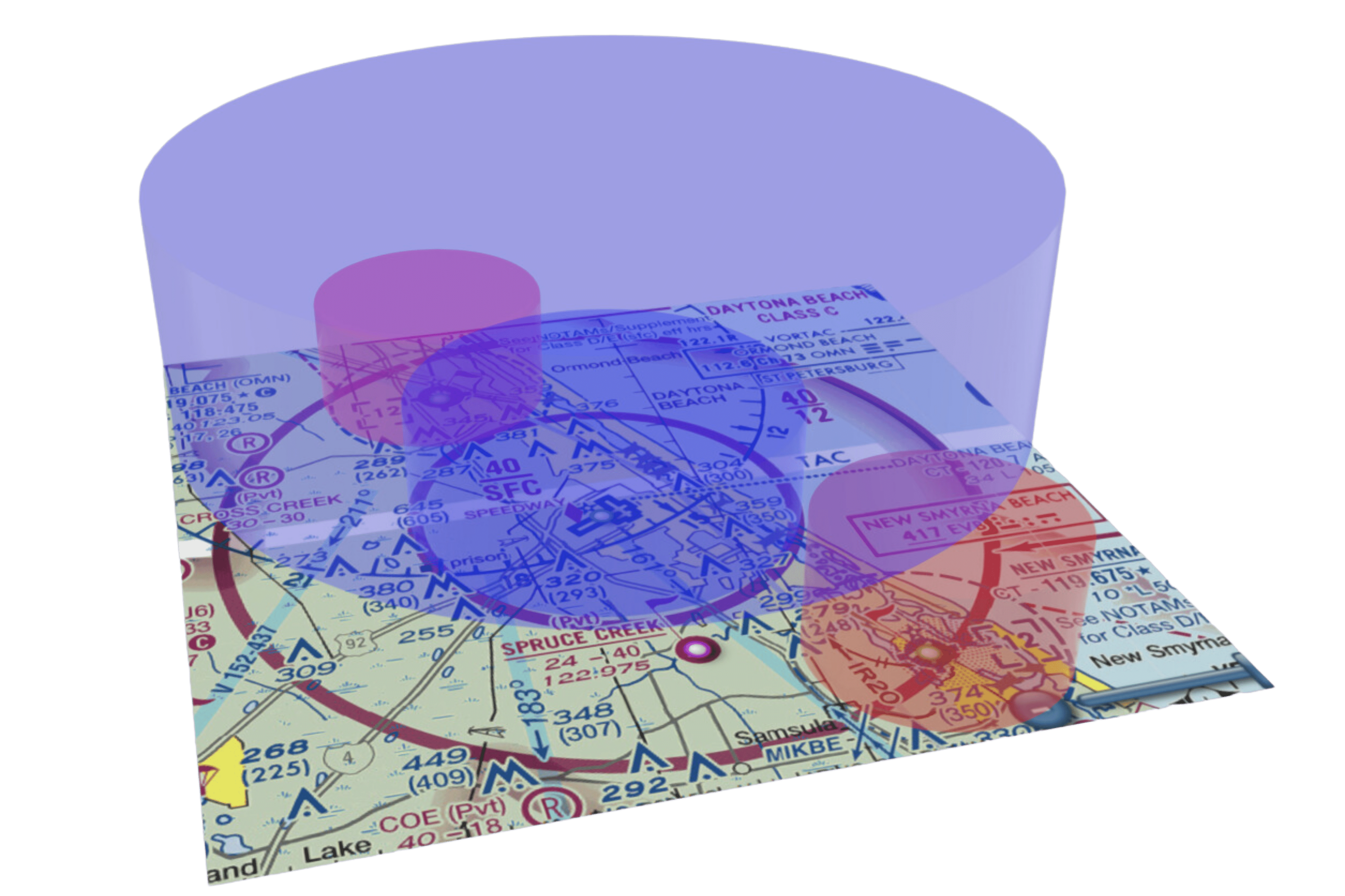Auto 101
for Crash Investigators
Know the Machine. Reconstruct the Truth.
Whether you’re diagramming damage, estimating acceleration, or inspecting vehicle systems, it pays to know what you’re looking at. Auto 101 breaks down everything from internal combustion to ABS to EVs—no mechanic certification required. Built for crash investigators, this course gives you the real-world knowledge to analyze a vehicle like it matters—because in your job, it does.

What you'll learn
Engine operation, braking, suspension, and steering systems—all broken down in plain terms so you can recognize what’s normal, what’s failed, and what’s relevant to your scene.
Learn what parts are where, what they do, and how they respond under load or failure. You'll be better prepared to diagram damage and interpret evidence from real-world crashes.
Explore how acceleration factors change between vehicles—and how to apply that to casework using real data, side-by-side comparisons, and multi-vehicle project examples.
From lamp conditions to tire pressure to interior clues—learn how to inspect a vehicle from bumper to bumper and uncover what matters to your investigation.
Modern vehicles are changing fast. You’ll get a crash course (no pun intended) on electric and autonomous vehicle design, limitations, and recon considerations.
Learn which automotive tools matter in recon, how to use them safely, and how basic mechanical knowledge can prevent dangerous missteps on scene or in the lab.

No talking-head avatars. No AI-generated robot voiceovers. No lame video script. This training was built by actual instructors who’ve worked real scenes, not failed marketing interns. Every lesson is broken into short, focused videos you can actually finish before your next callout. And yes—most course add up to 15+ hours of legit, actionable content. Mix in real life case files and projects to make you think, not just take up time, and you're on your way to traffic guru.

In the station. On your phone. Between calls. This training works where you work. If you’ve got an internet connection, you’ve got access—no log-in times, no Zoom meetings, no BS. Whether you’re watching from a laptop, a tablet, or the MDT in your cruiser, you’re in control of your pace and your progress.

We ditched the dry lecture format and built something better. From 3D models to augmented reality tools and first-person views, our lessons use creative tech to lock it in. Projects just to take up space and time? Not here, if it's not from a real crash or test, it's not here. This isn’t just training—it’s a crash course in learning the smart way. Built for how you think. Designed to keep you moving.
Syllabus
Module 1
Start with a crash-course in core automotive systems, engine operation, basic tools, and safety practices—all tailored for investigators who aren’t mechanics but still need to know their stuff.
Module 2
Break down the engine into its upper and lower components, understanding how combustion, compression, and mechanical energy all come together under the hood.
Module 3
Explore how the cooling, lubrication, and fuel delivery systems keep an engine running—and how their failures or damage show up at the crash scene.
Module 4
Go deep into the mechanics of braking—hydraulic systems, disc vs. drum, brake assist, ABS, and common failure points. Finish with real-world braking issue breakdowns.
Module 5
Learn the structure and function of frames, suspension types, and individual components. You'll see how these systems affect vehicle stability, weight transfer, and crash response.
Module 6
From tire types to pressure formulas and steering components, this module gives you tools to better assess control issues and wheel dynamics at a scene.
Module 7
Learn how to inspect a vehicle from the outside in—lamps, panels, glass, restraints, and interiors—with an eye toward crash investigation and evidentiary value.
Module 8
Explore how acceleration factors vary across different vehicle types and how to apply them correctly. Includes side-by-side comparisons, real examples, and project work.
Module 9
Understand how electric vehicles differ from internal combustion cars—and what that means for damage analysis, recon strategy, and safety on scene.
Module 10
Get a foundational understanding of autonomous vehicles and semi-autonomous systems—what they do, how they fail, and what you need to know for crash reporting.
Your instructor

Bobby J. Mullinax is a former police officer and longtime crash reconstruction instructor who’s spent nearly the last two decades helping other investigators sharpen their craft. With 15 years in law enforcement and over 7,000 hours of instructional time, he’s taught agencies across the country how to turn chaos into clarity at the scene of a crash. He’s also the creator behind multiple training programs and tools built specifically for working reconstructionists — cutting through the clutter with real-world workflows, intuitive software, and plain-English instruction that actually sticks.
What students are saying
FAQs
Our course has a help module that includes a FAQ block as well as the process for contacting us for help. From explaining a question more thoroughly in an email to hopping on a Google Meet and walking through a project, we have several different avenues to assist you.
Since the course is available online, you'll be able to start the course when you register. Whether it's a Sunday at 2:00 AM or noon on a Thursday, you'll be ready to go.
It happens. If you buy this online course and within 30 days aren't 100% satisfied, we will refund your purchase price, minus a 3% administrative fee from our payment processor. We do reserve the right not to refund the course is more than 30% has been completed.
Instead of acting like we're haggling over an old stool at a flea market, we don't really discount registrations here. Instead, we offer true enterprise level training where you can license our training curriculum and enroll as many attendees from your business or public safety agency as you'd like. Contact us for more info.
